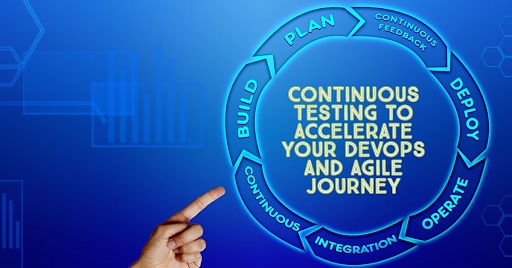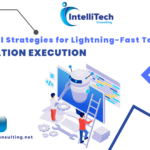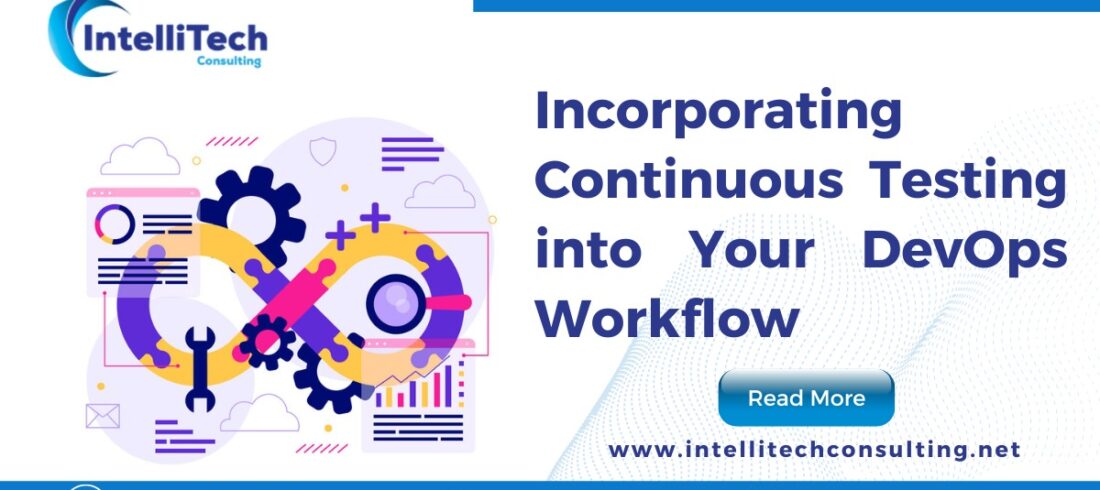

Continuous Testing to Accelerate your DevOps and Agile Journey
Digital transformation enabled by high-quality software applications and strong hardware platforms allows businesses across sectors and countries to gain a competitive edge. It is no longer essential to choose between software speed and quality; both should be available to customers.
The high-quality digital transformation accelerators included continuous integration (CI), continuous delivery (CD), and continuous testing (CT) when businesses adopt Agile and DevOps techniques to remain ahead of the competition.
Continuous testing has become both important and difficult. CT encompasses teams, tools, testers, and services, while CI and CD are mostly tools and team-driven processes. Throughout the software development life cycle, the essential significance of driving and integrating code changes cannot be overlooked. CI and CD, on the other hand, may become useless unless the automated delivery system can evaluate the impact of code changes on the client experience.
Increased competition and shifting market dynamics have increased the demand for businesses to innovate and adapt. Agile and DevOps methodologies, in combination with continuous testing, provide the framework for meeting the requirement. The requirement to provide software fast, securely, and reliably is at the core of digital transformation, which can be achieved via continuous testing in DevOps.
Why is Continuous Testing Necessary?
Today’s customers access software programs through various devices, operating systems, browsers, and networks. They demand high-performance, navigable, scalable, secure, intuitive, and fast-loading apps. These characteristics can foster if the software development process has a strong quality assurance system that fits the Agile or DevOps pattern. Unlike in traditional or manual testing, where QA is a distinct discipline after development, QA incorporates into the development team under Agile and DevOps models.
Agile testing evaluates the program for performance, security, usability, and scalability throughout the different phases of development. As a result, flaws are detected and corrected early in the SDLC, resulting in the delivery of high-quality software. A continuous test strategy allows companies to set the procedures, systems, and automation needed to speed up market time, improve feedback loops, and accomplish corporate aims such as quality products and services, operating efficiency, responsiveness, competitive differentiation, and improved customer service.
What advantages do Agile and DevOps offer?
- The DevOps methodology is excellent for businesses that struggle with demand management and fast change across the SDLC.
- DevOps enables businesses to meet their acceleration and integration requirements by creating a toolchain comprising development, quality assurance, integration, management, and delivery.
- To improve cooperation, the silo-driven development and operations teams should integrate. A method for getting ongoing input and producing higher-quality features and functionality should also be included in the pipeline.
Delivery and testing continuously.
To meet strategic business objectives, several companies have advanced from CI to CD implementation. They have done it by fine-tuning both procedures and technological frameworks. Continuous delivery and testing methods have covered all facets of the organization’s operations, from generating continuous integration builds and testing to accomplishing deployment. These enable the rapid and widespread deployment of high-quality software applications to end consumers. When establishing a continuous testing framework, the following questions should address:
- Is the software application deployable throughout its lifecycle?
- Is it possible to launch the software application while the development team is working on additional features?
- Is it possible for the process to get immediate and automatic feedback whenever a change is made?
- Is it possible to conduct a push-button deployment of a software version in any environment?
The Advantages of Agile, DevOps, and Continuous Testing for Enterprises
- Reduced time to market.
- Increased efficiency and productivity.
- Reliable and stable builds are released regularly.
- Capability to develop market-driven products.
- A more effective feedback system.
- Excellent client experience.
Conclusion
Increased focus on Agile, DevOps, and continuous testing techniques is the requirement for companies to be market disruptors by delivering high-quality software products or services. Because the complementary connection between the three techniques, processes, and organizational culture has restructured in favor of a new paradigm that focuses on continuous quality deployment.






